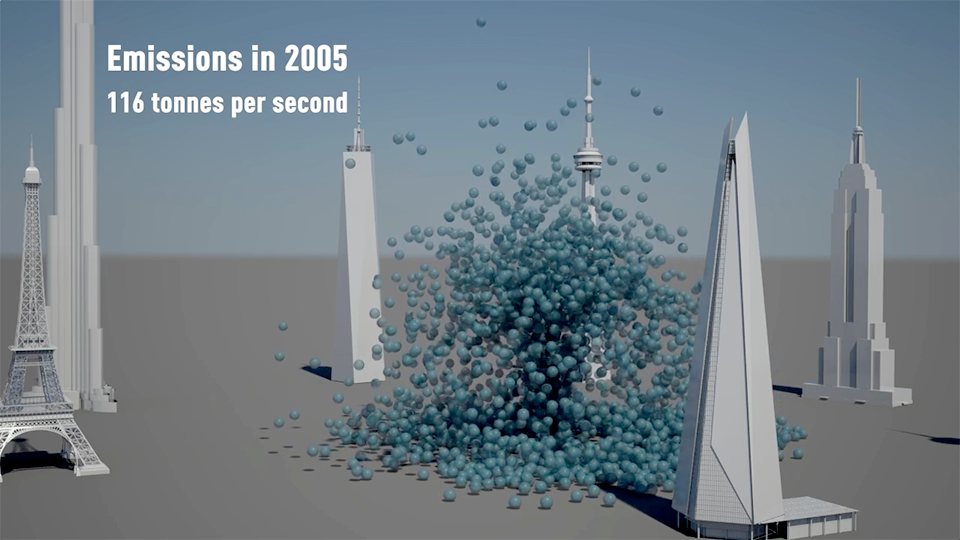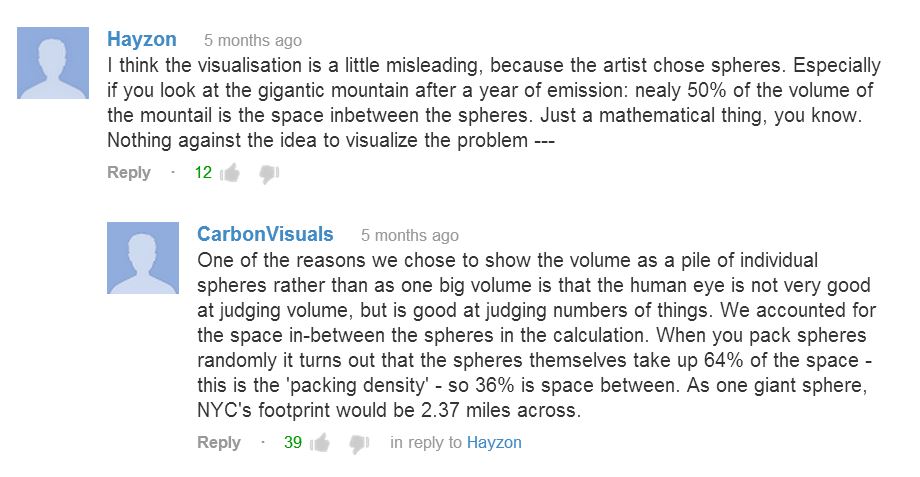Our Stories
How much carbon dioxide is in a small room courtesy of major fossil fuel companies? This was our question two years ago when we created images for the launch of the groundbreaking Carbon Majors Report.
Looking at the Earth can be an empowering experience: it can alter our sense of relationship with it and our role in protecting it. Earth Day is a celebration of the Earth but also of historic and continuing efforts to look after it. So this is a good moment to reflect on the importance of really engaging with the Earth
Five years on, our far-fetched idea of forming a business to visualise carbon emissions and other invisible stuff is developing at a pace. What gives me real satisfaction is that the range of clients is so extensive – campaigners, universities and corporations. Each has a story to tell – and the narratives speak of both challenge and opportunity.
Ted Flanigan of EcoMotion contacted us at Carbon Visuals last year having seen one of our early images of a London Bus next to one metric tonne of Carbon Dioxide. At that point EcoMotion had recently designed and produced a giant inflatable representation of a ton of carbon dioxide. Over 31 feet in diameter, THE Ton is a gigantic air-filled ball. A dramatic sight, specifically designed to stimulate people into reducing their emissions.
Participating at SWSX Eco got me thinking again about how we engage people in the climate / energy challenge. I don’t mean the small percentage of committed greens or sceptics at either end of the spectrum. We are talking here about the man and woman on the street – the majority who we need to engage to support, rather than block, the transition to a low or zero-carbon future.
This is the strap-line on the feature about our visuals in the current edition of Conservation magazine published by The University of Washington. Rather than a play on words there is a depth to this phrase that is about a pivotal point in each person’s comprehension of climate change.
Human induced climate change is claimed to be the greatest challenge of the 21st century. But man-made carbon emissions continue to rise - the 400ppm carbon milestone causes barely a ripple. I am intrigued as to why, in society at large, there is little grass roots support, no loud and clear call for action to address this issue.
The number and mixture of comments that we have received since releasing the New York Emissions film through You Tube, Twitter and email has been really useful as a means of assessing its impact. And generally aiding us in best understanding how visuals can really help.









At Carbon Visuals we have been thinking about air pollution: why it needs visualisation and how best to visualise it. These are some initial sketches.